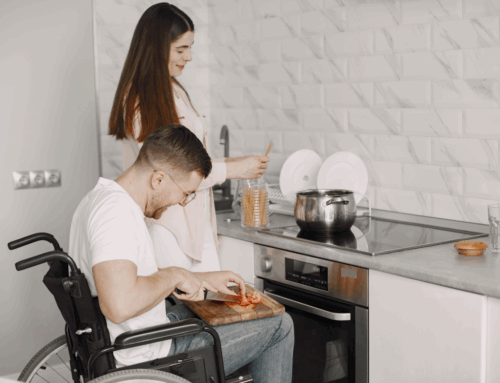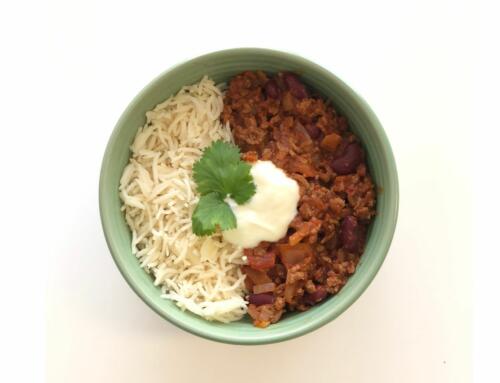Are you the kind of person who meal plans, writes a shopping list, and actually sticks to it? Or do you mean to follow the list, but end up throwing random items into the trolley because “I might need 6 cans of chickpeas later”?
Or maybe you’re the free spirit of the supermarket world..no list, no plan, just a bit of a wing it attitude. You wander in, grab whatever looks good, and somehow by the end of the week you have a fridge full of bendy carrots and mystery greens that quietly wilt away until they’re more compost than cuisine.
Whichever camp you fall into, the truth is that food waste is a massive issue, but we can actually do something about it.
The 29th September 2025 is the 6th year of the International Day of Awareness of Food Loss and Waste. This is an important topic for dietitians. Why? Because the more food that is wasted, the more it can contribute to food insecurity which is something we see the outworkings of so often in our clinic. Food loss and waste reduces the amount of food available for the growing population, resulting in 1 in 11 people going hungry worldwide.
Ever noticed if you have to finish your plate, even when you’re full? Or maybe you eat faster than a cheetah chasing dinner across the African savanna? These habits often stem from learned behaviours, sometimes passed down from our parents who experienced food insecurity themselves.
The way we interact with food is shaped by our environment, but if we can all make small, sustainable changes, we can start to shift the culture around food and reduce waste on a meaningful level.
When we talk about food waste, most people would think of those sad leftovers you never got around to eating, or that science experiment growing at the back of the fridge. But there are actually seven types of food waste:
- Expired Foods: Thrown out because the date has passed (even if it still smells and tastes fine).
- Spoiled Foods: Gone bad due to bacterial overgrowth or poor storage.
- Plate Waste: Edible food left behind after meals (at home or commercially).
- Production Waste: Inedible bits of food thrown out during food processing or prep.
- Overstocking/Overordering: Good food discarded due to buying or ordering too much.
- Cosmetic Imperfections: Food thrown away because it’s ugly (rude).
- Food Loss: Food wasted during the farming, post harvest or during transport before it reaches us at the store.
Shockingly, around one third of food is lost or wasted globally every year, which is equal to over ONE BILLION TONNES! Of this, 60% of global food waste comes from households. Although these statistics are alarming, the good news is that we CAN make a significant difference if we change our food habits and behaviours at home.
But how? Like most things, it’s difficult to overhaul something overnight but small steps can add up to big changes over time. Here are some ways you can start to cut back on food waste at home:
- Get Creative: Use food and ingredients you have on hand and learn to be adaptive and creative with meal ideas by searching online for recipes.
- Meal Planning: Plan your meals in advance so you know what to buy and what you can use that you may already have on hand.
- Check Your Stock: Check your pantry before shopping to avoid doubling up on the same items.
- Use Ingredients Multiple Ways: Bought veggies for a stew? Roast the extras for lunch salads or snacks later in the week. Didn’t use the whole can of coconut milk, add it to smoothies for breakfast or throw it into your rice before cooking to give it a delicious coconut kick.
- Store Food Properly: Use good food storage techniques to improve shelf life e.g. store leftover food in airtight containers or covered in glad wrap, decant opened canned foods into another container, freeze leftover bread or shredded cheese for later use before it goes mouldy, and store fruits and veggies in the crisper or specially designed fruit & veg bags.
- First in, First Out: Always ensure you’re always using the oldest items first.
- Rethink Food Scraps: Broccoli or cauliflower stems? Roast them. Spring onion or carrot tops? Use as garnish or in a salad. You could also start composting and feed your garden instead of the bin.
There are so many ways you could make a difference to your waste management at home and every little bit counts. So this International Day of Awareness of Food Loss and Waste, take a moment to look in your fridge, your habits, and your trolley and maybe ask yourself the question: “Where can I waste a little less and use a little more?”
Oh and maybe go check on those bendy carrots…
Do you have any food, nutrition or wellness related topics you would like to hear us write about? Send your questions/ideas to [email protected]









